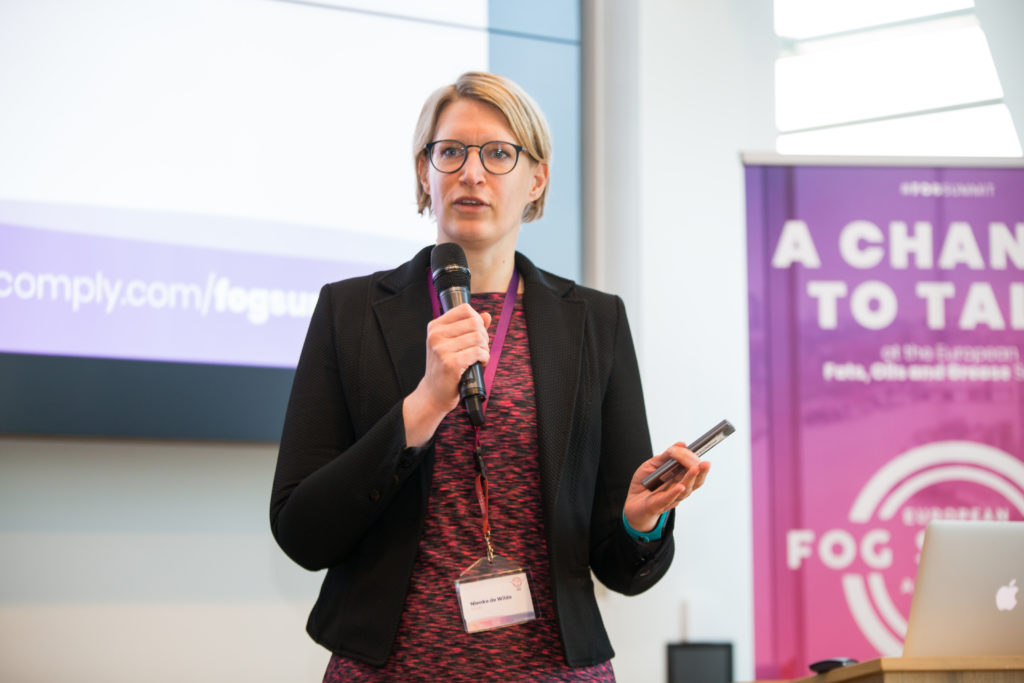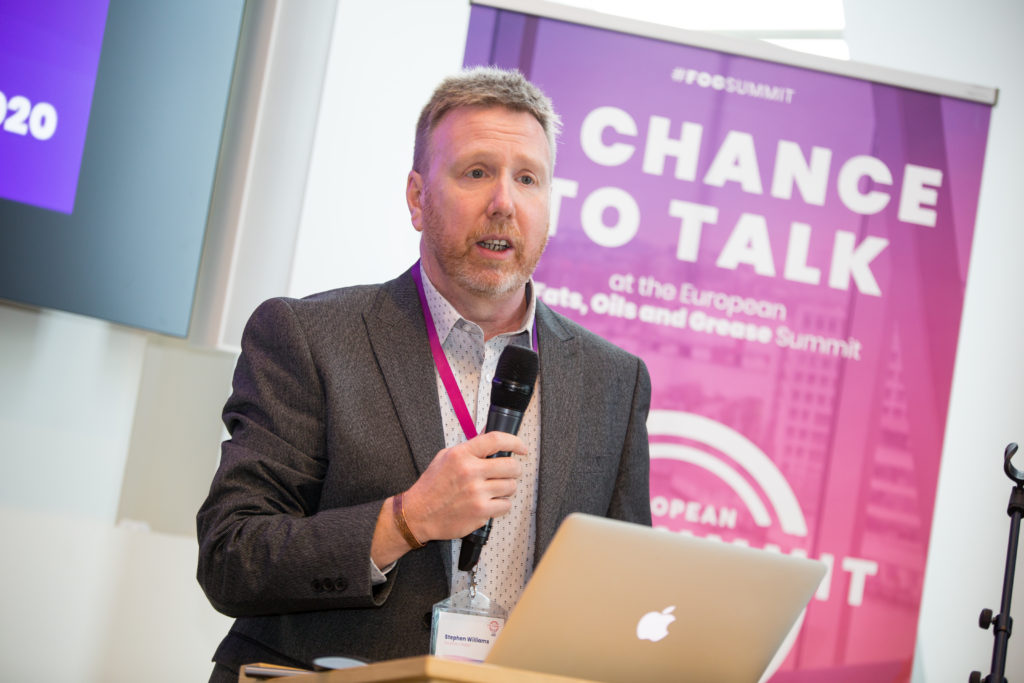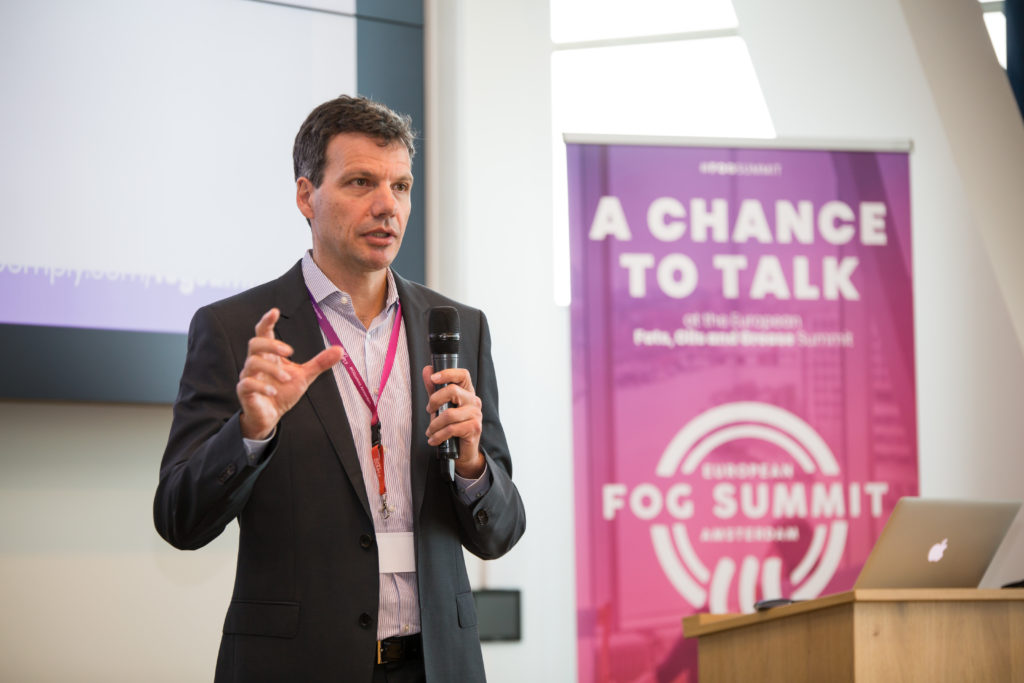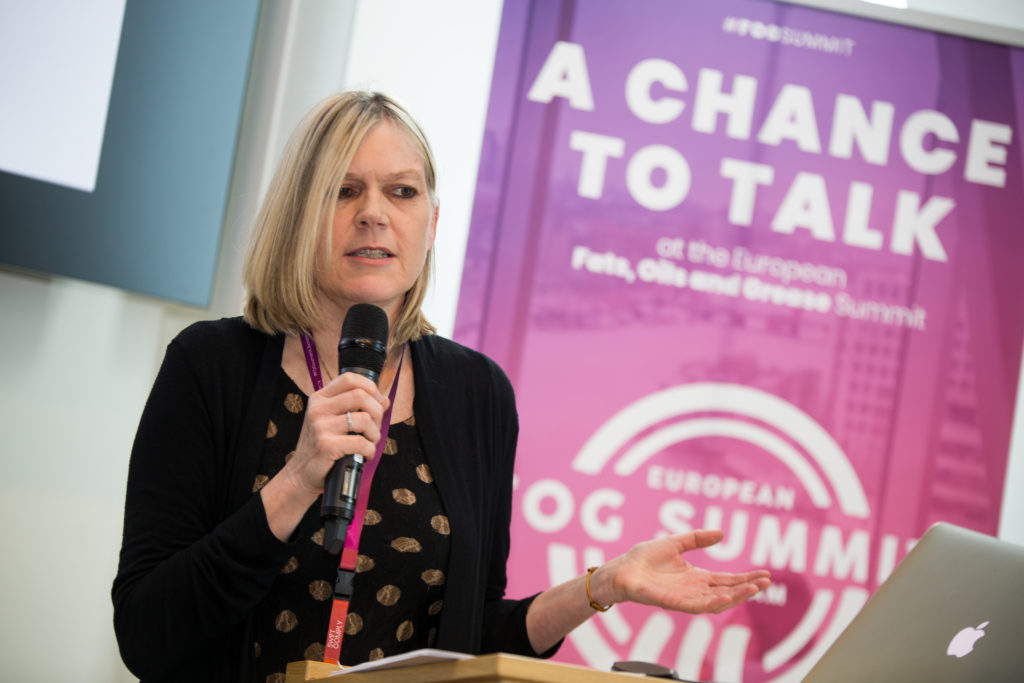The issue of fats, oils, and grease (FOG) slipping into the sewers is a universal one, it is safe to say that every city will face a certain degree of FOG pollution — be it from commercial or domestic sources. This doesn’t mean, however, that everybody is fighting the problem in the same way or with the same type of regulation.
In this article:
- In the Netherlands, proper legislation makes the difference
- In the UK, a tiny detail gets in the way
- In the US, there is a program for everyone
- Regulation and society
Earlier this year, specialists in water and wastewater management gathered in Amsterdam for the European FOG Summit 2020. The different ways that FOG pollution is tackled was a recurring theme during the two days of the event. Although it became clear that there is no ‘one size fits all’ formula, it is possible to see some consensus when it comes to managing this waste resource, and that legislation is an inconsistent driver around the world.
In the Netherlands, proper legislation makes the difference

According to Nienke de Wilde, Lead Inspection & Enforcement at DCMR — the environmental protection agency of the province of South Holland — the Dutch currently have specific legislation stating that all water containing FOG must pass through a grease interceptor before being discharged into the sewer. Moreover, the devices have to be installed correctly and maintained regularly.
These are the key points that make up the foundation for the country’s anti-FOG pollution efforts. But what translates them into actionable management is all the effort that is put into inspection.
“We do different types of inspections,” de Wilde says. “We inspect new restaurants before they open, we check if everything is in place. We also do proactive inspections for existing restaurants — for example, in restaurants that are considered at higher risk of FOG problems, but also in restaurants that have a dispensation to not have a grease interceptor, we check if that’s still the case. And we do reactive inspections, so when we have complaints about FOG in the sewer, in the restaurant, we also check them out.”
Non-compliant food service establishments (FSEs) can face a series of punishments. In the administrative field, the ‘most popular,’ de Wilde says, are incremental penalties, when a company is first given a certain amount of time to fix their infraction before starting to receive fines. “And we give them multiple times, so if you don’t fix it, you’re going to have multiple penalties until you fix it.” She calls it a ‘stimulant’ to force people into compliance.
But there is also ‘administrative coercion,’ which occurs when the risk to the environment is imminent. In these situations, the DCMR will fix the problem and make those responsible pay for the service. More extreme cases end up as criminal lawsuits.
The results have been largely positive. The DCMR is present in Rijnmond — the area surrounding the city of Rotterdam — overseeing 15 municipalities and one province. In 2019, there were 919 inspections (406 of them being preventive) at 488 companies, and though 28% were non-compliant, 90% of the companies have grease control devices in place to prevent FOG from reaching the sewers.
The way the Netherlands deals with this issue will change next year, however, when the country introduces an approach that is similar to the one seen in the US (which we cover later in this article). Instead of following single, nationwide legislation, municipalities will have to come up with their own regulations.
For de Wilde, this change brings risks but also opportunities, since local governments often have more room to invest in innovation. The audience seemed to agree; there was a real-time poll at the event and 56% of the attendees considered the change an opportunity. “We’ll have to see how it goes,” says de Wilde.
In the UK, a tiny detail gets in the way

Things are quite different in the UK, where the legislation around sewer protection is cloudy and open to interpretation when it comes to fats, oils, and grease.
Stephen Williams, who is a Network Protection Enforcement Officer at Southern Water, observed that FOG is somewhat present in a series of regulations in the country. But because none of them is straightforward, utilities can have a hard time dealing with this issue.
“Our current legislation in the UK is minimal, to say the least,” he noted. One regulation, for example, is only one paragraph long and contains a semantic challenge. It’s in the Building Regulations Document H1, Section 2.21, and states that drainage serving kitchens in commercial hot food premises should be fitted with a grease separator.
Williams explained how a single word puts the UK apart from most of its counterparts in Europe in terms of FOG management: “That’s the only mention in our legislation that says that you should fit any equipment to any standard. There’s no legislation out there in the UK that says that you must fit any grease management at any particular point. In Building Regulations, it says should and not shall, so it is a recommendation only, it’s not a direction.”
The lack of proactive legislation leaves the UK with its second-best alternative, the reactive norm Section 111 of the Water Industry Act 1991. The text very clearly states that one cannot discharge into the sewers anything that could harm the system. “The problem with this legislation is, it is non-specific, it doesn’t say that all food service establishments should have grease management. It says: if you put something in the sewer that causes a blockage, then you commit the offense.”
The British sewer system is not made of equally sized pipes; some are as small as an orange while others can fit entire crews. Besides, pipes are manufactured with a range of materials including plastic, clay, brick, cast iron, and pitch fiber, and each one reacts differently to different kinds of pollution.
What this means is, depending on the circumstances, an FSE that systematically pours FOG down the drain might never cause a blockage — so in theory, this polluter wouldn’t be breaking the law. Williams used McDonald’s as an example: even though the chain follows the same process around the world, some of its restaurants will cause blockages and some won’t.
The consensus among UK water and wastewater management specialists is that the local regulatory landscape around FOG needs upgrading so that enforcement can gain more relevance. Water companies have been trying to educate their customers about the issue, but end up penalized all the same when they can’t convince them to do the right thing. “We are under immense pressure,” Williams stressed.
In the US, there is a program for everyone

The United States counts on a well-structured regulatory framework to deal with fats, oils, and grease. The Environmental Protection Agency oversees the country’s 50 states through something called the Clean Water Act. Each state must introduce its own legislation and reporting methodology, which will then become the point of reference for counties and cities to control FOG pollution on a local level.
“We think that the FOG market is pretty mature in the US,” said Olivier Terrien, Vice-President of Business Development at SwiftComply. “We did a survey about two years ago, and two-thirds of the people surveyed mentioned that they have a FOG program in place. Among the remaining that didn’t have one, half of them were planning to implement it in the near future.”
As Terrien pointed out, although there is a multitude of management options in the US, it is possible to break them down into three categories: responsive, evidence-based, and risk-based programs.
The first one happens when the municipality deploys minimal resources into FOG management. In these cases, the program rarely counts on full-time enforcers (FTE), so much so that the ratio is about one FTE covering 1,000 food service establishments. This scheme doesn’t place a huge financial burden onto small and medium-sized enterprises, but because it takes a reactive approach, it allows for more issues related to FOG pollution to happen.
Evidence-based programs are the opposite; they appear when a city pours a lot of resources into FOG management. With about one full-time officer covering 300 FSEs, these cities show levels of compliance above 90% and have a low risk of sewer blockages. “To do that, they have a very strong legal authority,” Olivier explains, adding that in places like DeKalb County, in Georgia, the inspectors are sworn officers who can even carry firearms.
Then there are risk-based programs, which Olivier classifies as an influence and nurture approach: “It’s a lot about the collaboration, a lot focused on the outcome.” Here one FTE covers about 750 FSEs. With fewer resources, the idea is to stimulate businesses to submit their information and then go after the ones that don’t. The compliance rate is between 75% – 85%, which is good when compared to responsive programs, but the risk of blockages is higher compared to evidence-based schemes.
Regulation and society

Although terms such as ‘legislation’ and ‘regulation’ imply government action, the European FOG Summit showed that members of society can get organized and weigh in on the subject.
A practical example was given by Communications Consultant Clare Pillinger. As chair of the British Standards committee focused on flushability, she was part of the group that helped to create the ‘Fine to Flush’ standard launched in the UK in 2019. The initiative became successful and is starting to spread to other countries, so now Pillinger believes something similar could be done for FOG management. “There are so many similarities with grease management,” she said. “The two are entwined.”
The reason why it is so important to listen to multiple sources to regulate FOG is that there are too many different players and variables involved.
Dr. Tom Curran, a Lecturer at UCD School of Biosystems & Food Engineering, explained that with more people now living in cities than in rural areas, there came a surge in demand for options to eat out. This created clusters of FSEs and opened space for the food truck industry, which is a challenge in itself in terms of regulation.
The takeaway from the participants is that specific legislation is a strong ally in the fight against FOG pollution. The subject is complex but, as evidenced by the Dutch and American examples, not impossible to deal with. It’s just a matter of effort.
